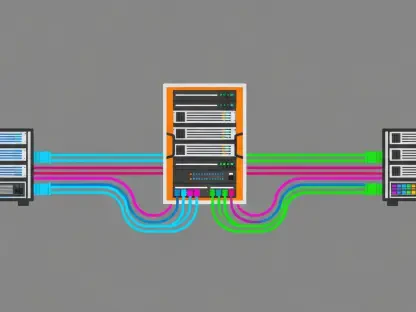In an era where digital warfare is as critical as physical combat, the protection of national security hinges on robust cybersecurity measures capable of countering sophisticated threats from state-sponsored actors and cybercriminals alike. As nations become increasingly interconnected through technology, vulnerabilities in critical infrastructure and sensitive military data expose them to risks such as espionage, data breaches, and societal destabilization through disinformation. The urgency to adopt cutting-edge solutions has never been greater, with defense agencies racing against time to stay ahead of evolving dangers. Amid this complex landscape, innovative platforms play a pivotal role in bridging the gap between traditional defense strategies and modern digital needs. This article explores how a unique ecosystem facilitates rapid access to advanced technologies, empowering defense leaders to fortify their digital frontlines against an array of cyber threats.
Addressing the Digital Threats to National Security
The scope of cyber threats facing national defense today is staggering, encompassing everything from attacks on critical infrastructure like energy grids and telecommunications to the theft of classified military information. These incursions can disrupt essential services, compromise operational readiness, and even undermine public trust in governmental institutions. Protecting these assets requires a multi-layered approach that integrates advanced tools such as biometric authentication, physical security sensors, and rigorous penetration testing to identify and mitigate weaknesses before they can be exploited. Defense agencies must prioritize resilience, ensuring that systems remain operational even under sustained attack. Without such measures, the consequences could be catastrophic, ranging from economic losses to strategic disadvantages on the global stage. The challenge lies not only in implementing defenses but in anticipating the next wave of threats that adversaries might deploy.
Beyond infrastructure, the rise of misinformation and disinformation campaigns poses a unique and insidious threat to national stability by manipulating public perception and eroding societal cohesion. These operations, often orchestrated through social media and other digital channels, can destabilize democratic processes and incite unrest, making them a potent weapon in hybrid warfare. Countering such tactics demands sophisticated tools capable of detecting false narratives in real time and neutralizing their spread before they gain traction. Technologies like AI-driven content analysis and anomaly detection are becoming indispensable in identifying coordinated efforts to mislead populations. Defense agencies must adapt to this evolving battlefield by integrating these solutions into broader cybersecurity frameworks, ensuring that both technical and psychological dimensions of security are addressed with equal rigor. The stakes are high, as failure to act can amplify internal divisions and weaken a nation’s resolve.
Innovating Defense with Advanced Cybersecurity Solutions
One of the most transformative developments in cybersecurity for national defense is the integration of AI-powered analytics, which enables real-time monitoring of network traffic to detect anomalies that could signal an impending attack. This technology empowers defense agencies to respond swiftly to potential intrusions, whether they stem from espionage or malware designed to cripple systems. By leveraging machine learning algorithms, these tools continuously improve their ability to identify novel threats, staying one step ahead of adversaries who constantly refine their tactics. Additionally, secure data management practices such as zero-trust architectures ensure that every access request is verified, minimizing the risk of unauthorized entry even within trusted networks. Such proactive measures are essential in safeguarding sensitive information that, if compromised, could jeopardize national interests on a profound level.
Complementing these technologies are strategies like data tokenization and encrypted cloud storage, which render stolen information useless to attackers by obscuring its true content. These methods are particularly vital for protecting military communications and strategic plans that are frequent targets of cyber espionage. Defense agencies must also contend with the sheer pace of digital evolution, as threats emerge faster than traditional procurement processes can address them. This necessitates a shift toward agile adoption of innovations, allowing for rapid prototyping and deployment of solutions tailored to specific vulnerabilities. By embracing a forward-thinking mindset, defense entities can build resilient systems capable of withstanding sophisticated attacks while maintaining operational continuity. The integration of such advanced tools marks a significant departure from reactive security postures, positioning nations to anticipate and neutralize threats before they materialize.
The Role of Open Innovation Ecosystems in Defense
Navigating the complex landscape of cybersecurity innovation requires access to a vast array of cutting-edge technologies and expertise, a challenge that open innovation ecosystems are uniquely positioned to address. By connecting defense agencies with a global network of startups, scale-ups, and industry experts, these platforms facilitate the discovery of solutions that might otherwise remain out of reach due to bureaucratic delays or limited visibility. Services such as innovation days and webinars provide opportunities for collaboration, allowing defense leaders to explore emerging tools and methodologies in a dynamic environment. This approach accelerates the adoption of technologies critical to national security, ensuring that agencies remain agile in the face of rapidly evolving digital threats that demand immediate attention.
Moreover, tailored programs within these ecosystems target specific operational challenges by curating strategic roadmaps for testing and implementation of new solutions. For instance, detailed ecosystem maps offer insights into technological trends, enabling long-term planning for cybersecurity initiatives that align with national defense priorities. This structured yet flexible framework empowers Chief R&D Officers and Chief Innovation Officers to identify gaps in current defenses and integrate impactful innovations effectively. By fostering partnerships between public and private sectors, such platforms break down silos that often hinder progress, creating a collaborative space where ideas can be transformed into actionable defenses. The result is a more robust cybersecurity posture that not only addresses immediate risks but also prepares nations for future challenges in an increasingly digital world.
Building a Resilient Future Through Strategic Partnerships
Reflecting on the strides made in cybersecurity for national defense, it’s evident that strategic partnerships play a crucial role in enhancing digital resilience. Defense agencies collaborate with innovative ecosystems to access a wealth of technological advancements, ensuring that critical infrastructure and sensitive data are shielded from sophisticated cyber threats. AI-driven analytics and zero-trust architectures have become cornerstones of these efforts, providing proactive detection and stringent access controls that thwart potential breaches. Additionally, countermeasures against disinformation campaigns help preserve societal trust, addressing a critical yet often overlooked aspect of security.
Looking ahead, the focus must shift to sustaining this momentum by fostering continuous collaboration between defense entities and technology innovators. Establishing frameworks for rapid prototyping and deployment will be essential to counter emerging threats that grow more complex with each passing day. Defense leaders should prioritize investment in scalable solutions that can adapt to future challenges, while also nurturing global networks to share insights and best practices. By maintaining this proactive stance, nations can build a fortified digital landscape that safeguards both security and stability for years to come.









